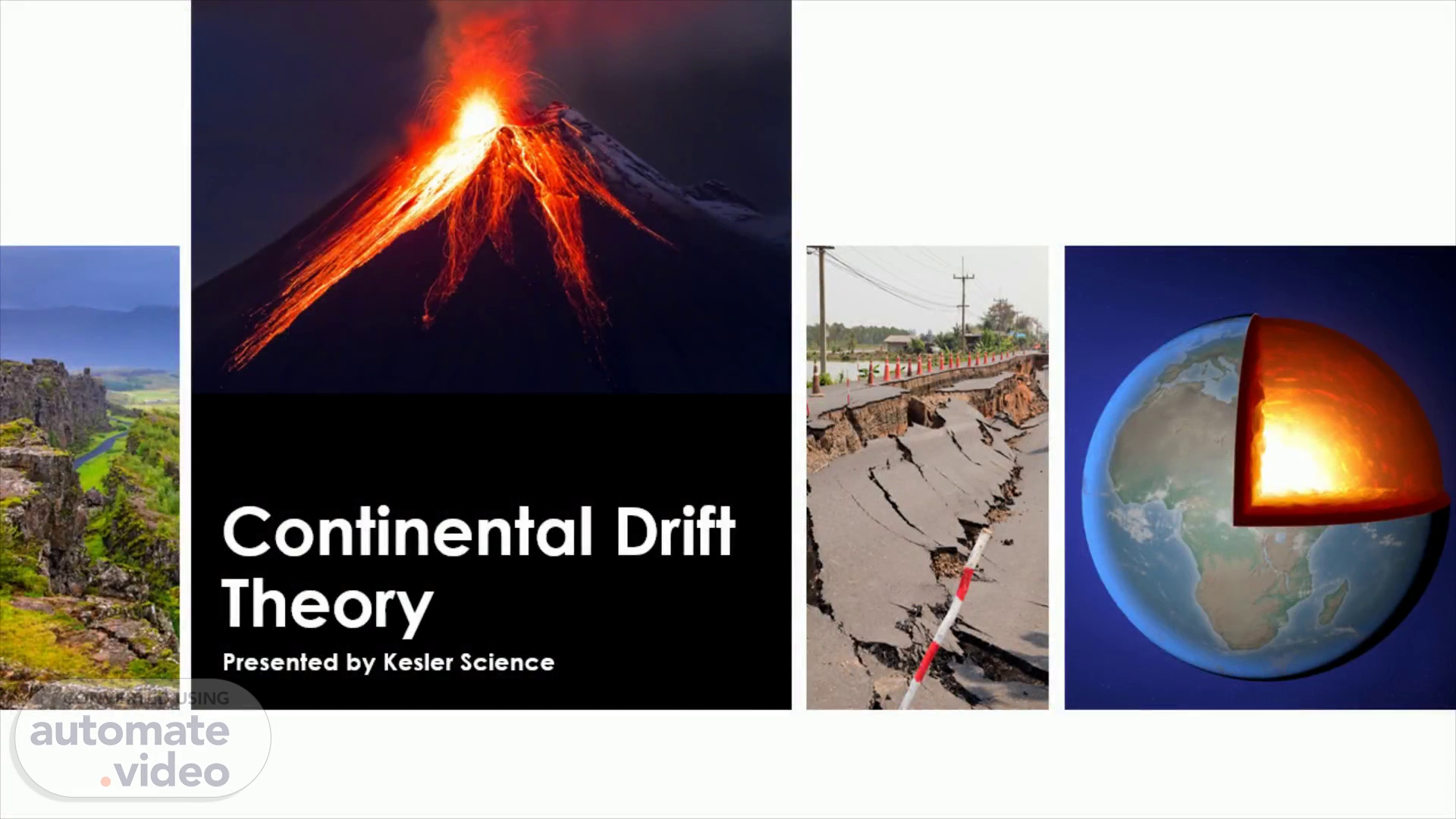
Continental Drift Theory
Scene 1 (0s)
[Audio] Created by Kesler Science – More 5E lessons at KeslerScience.com.
Scene 2 (7s)
Who is Alfred Wegener What is the historical evidence that supports the Continental Drift Theory? What causes the movement of the continents?.
Scene 3 (19s)
[Audio] Meet Alfred Wegener ( 1880 – 1930) Proposed the Continental Drift Theory - The idea that Earth's continents moved apart from a single large continent called Pangaea Despite a large body of compelling fossil and rock evidence, his theory was rejected by most other scientists. He knew the continents were moving, but he could not explain HOW the continents moved. It was only in the1960s that the Continental Drift Theory finally became accepted and became part of the Theory of Plate Tectonics..
Scene 4 (55s)
[Audio] Pangaea Was a super continent Began to break apart about 175 million years ago There were probably other supercontinents before Pangaea. The Earth's continents have been continually breaking apart and coming together..
Scene 5 (1m 15s)
[Audio] Laurasia and Gondwanaland Gondwanaland separated from Laurasia between 200- 180 million years ago. This roughly formed the northern and southern hemispheres..
Scene 6 (1m 29s)
[Audio] Wegner's Supporting Evidence Fossil evidence Continental Fit Glacial evidence Landforms & Rock Layers.
Scene 7 (1m 43s)
[Audio] Fossil Evidence Fossils of the same species were found on separate continents and nowhere else. These plants and animals would have had to evolve independently or swim the distances. Fossils found didn't fit the climate. ( Palm tree leaf fossils were found in Alaska.).
Scene 8 (2m 5s)
[Audio] Glacial Evidence Glacial deposits formed 300 million years ago are found in Antarctica, Africa, South America, India and Australia. Striations ( scratches on rocks) show the ice flowing from the glaciers came from a single point. Evidence of glaciers is found in warm climates today..
Scene 9 (2m 29s)
Glacial Evidence. Glacial deposits formed 300 million years ago are found in Antarctica, Africa, South America, India and Australia..
Scene 10 (2m 39s)
[Audio] Continental Fit The continents, particularly South America and Africa, fit together like puzzle pieces. This was another piece of evidence that the continents were once joined..
Scene 11 (2m 56s)
[Audio] Landforms and Rock Layers Similar types of rock, mountains, and landforms match up across different continents The Appalachian Mountain matched well with those on the British Isles as well as other places. Similar types of rocks and similar ages of rocks were found on these three continents and other places. The coal fields in North America and Europe match up..
Scene 12 (3m 24s)
[Audio] As a scientist how would you feel if years of your research was discounted, unnoticed, or completely rejected? That has happened to many of our great scientists over the decades. Years after their death many of those theories became accepted..
Scene 13 (3m 41s)
[Audio] Clear up any confusion and answer questions..